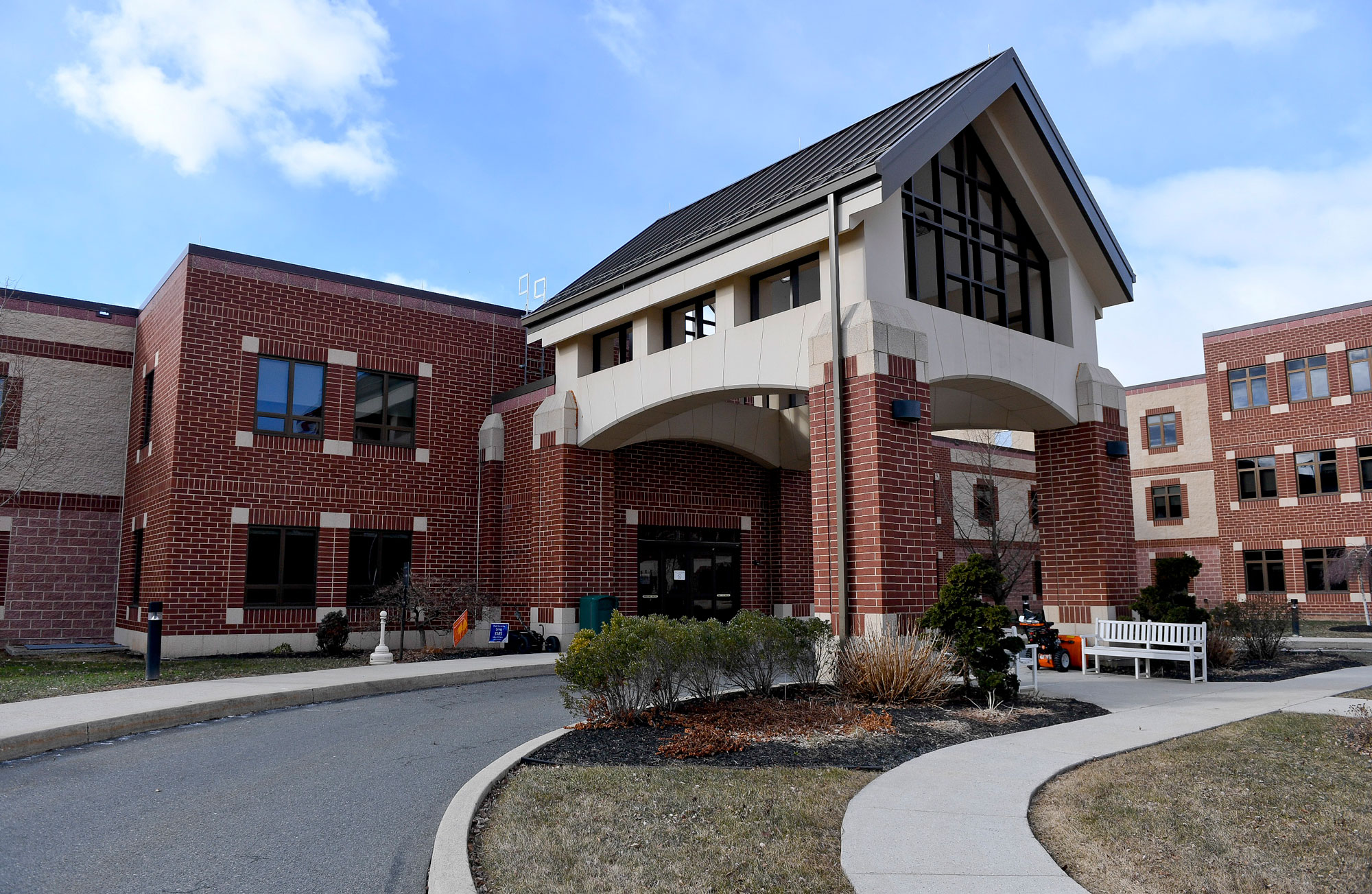Health Care
Pennsylvania caregivers sound the alarm on a worsening workforce crisis
Potential cuts to Medicaid could further complicate an already dire situation.

Joyce King receives a new ballot at her nursing home on Sunday, Nov. 3, 2024 in South Philadelphia. Joe Lamberti for The Washington Post via Getty Images
Pennsylvania’s population projections illustrate a commonwealth at a fraught tipping point: At a time when the state’s working-age population is shrinking and its retired population is growing larger, the commonwealth could soon see the number of those in need of care outnumber those available to care for them.
In fact, it’s already happening. More than 400,000 Pennsylvanians rely on in-home care services, and industry leaders say the state is already stretched for in-home care providers, with more than 112,000 direct care shifts going unfilled in the state each month. In the commonwealth’s long-term care sector, which serves residents in nursing homes and other long-term care facilities, workforce shortages are equally apparent.
A recent survey conducted by the Hospital and Healthsystem Association of Pennsylvania, LeadingAge PA and the Pennsylvania Health Care Association surveyed 119 Pennsylvania hospitals and 211 nursing home providers. According to the survey, 70% of hospital respondents said workforce shortages have led to increased emergency room wait times, while another 68% said they have experienced increased wait times to schedule appointments and procedures.
Nursing home providers have also reported a bevy of issues as a result of workforce shortages: 53% of respondents said they had to limit or cap admissions; 38% said they had to defer facility upgrades as a result; and another 24% said they are putting admission referrals on wait lists. “We’ve had to delay admissions by days if staffing is tight,” one anonymous nursing home operator said in the survey. “This requires the hospital to hold longer and backs up the system, in addition to the negative impacts on the resident.”
With Pennsylvania’s senior-age population expected to grow over the next five years, caregivers and industry leaders say something needs to be done.
“We’re moving from a state that currently has 1 in 4 people over the age of 65 to a state that will have 1 in 3 people over the age of 65 by 2030,” Mia Haney, CEO of the Pennsylvania Homecare Association, told City & State in an interview. “That’s a huge shift in a five-year timeframe. We are already in dire need for workforce to meet the current demand – and that doesn’t address the rising demand.”
Haney added that with so many in-home care shifts going unfilled, largely due to workforce shortages, more nurses are burning out and logging “incredible amounts of overtime.”
Long-term care providers are also feeling the pain. The joint workforce survey conducted by HAP, Leading Age PA and the PHCA noted that staffing ratio requirements that went into effect in 2023 have also had negative consequences for access to care. The survey found that 42% of respondents said they were limiting or denying admissions as a result of the requirements.
Zach Shamberg, PHCA’s president and CEO, said the survey “illustrates and emphasizes the key challenges” facing Pennsylvania’s care continuum.
“In nursing facilities, the findings are staggering – with a shortage of nearly 2,600 care providers to meet state staffing ratio requirements and an additional shortage of over 20,000 per year through 2032, it’s no wonder we’re facing an access-to-care crisis throughout the commonwealth,” Shamberg said in a statement upon the release of the survey findings, noting that the findings should serve as a “wake-up call” for state officials. “Nursing facilities are trying to manage these challenges but are inevitably forced to limit admissions, close units and increase their use of costly contract agency staff.
“The time is now to address the sustainability of nursing facilities to care for our older adults,” he added.
A rally organized by PHCA at the Pennsylvania Capitol on May 6 looked to spotlight the impact of workforce shortages across the state, and included remarks from Republican state Sen. David Argall, who has introduced a package of bills – supported by PHCA – aimed at addressing the state’s ongoing workforce shortages.

Senate Bill 114 would give student and graduate nurses the ability to take the Certified Nurse Aide exam upon the completion of their coursework, while Senate Bill 115 would allow those interested in becoming caregivers to take a skills competency exam in lieu of a high school diploma or GED. Argall’s third bill, Senate Bill 116, would give high school students the ability to earn credit for employment in a congregate health care setting.
He’s also the sponsor of legislation that seeks to establish a minimum threshold for the state’s Budget Adjustment Factor, which helps determine how the General Assembly divvies out funding for nursing homes that rely on Medicaid. “If the legislature were to set a minimum BAF floor at .90 and fund the system accordingly, operators would have more predictability regarding the resources they will receive,” Argall wrote in a co-sponsorship memo to colleagues.
As far as in-home care is concerned, Haney said it’s pivotal that lawmakers approve an increase to the state’s Medicaid reimbursement rate for personal assistance services. The organization is asking lawmakers and Gov. Josh Shapiro’s administration to approve a 10% increase in the reimbursement rate in this year’s state budget.
“The workforce challenge is largely driven by the fact that many of these services are paid for by Medicaid, and Medicaid dictates the reimbursement rate,” Haney said. “There’s a fee schedule, and we all adhere to it. The fee schedule over the course of the last 12 years has only increased by $1.91. That means that providers have been providing the same service with an increase that is far under inflation and far under their ability to be competitive, to gain workers, to be able to meet the need.”
Haney said roughly 85% of the reimbursement rate funding goes to direct care worker compensation and benefits, while the other 15% typically goes toward administration and other staffing costs.

“These services make sense financially. It is cheaper to pay for services in the home than it is to pay for them in a facility. We have done a really good job in Pennsylvania at putting people at home. Now we need to do a better job at keeping them there, because if we start unbalancing and we start sending more people to facilities instead of home because we can’t staff them at home, we will end up paying far more from our Medicaid dollars than we are today,” she said.
Individual caregivers from across Pennsylvania say they see and feel the effects of workforce shortages firsthand.
Anthony Laws, a 51-year-old certified nurse assistant who works in a dementia unit in Delaware County, told City & State that he sees high levels of burnout, particularly among nursing home staff.
“Burnout is a real thing – not just in the hospitals, but more so in the nursing homes, because of the higher patient-to-staff ratio, the lack of compassion from the administrative staff,” Laws said. “In this field, I don’t care what anybody says – it makes you numb inside. In some ways, it can affect your personal life, because you're forcing yourself to be numb to the situation that you’re dealing with for eight hours a day … numb to the fact that your residents are suffering, numb to the fact that your co-workers are burning out, numb to the fact that you don’t have supplies.
“When you go home, you’re just this numb person sitting here … trying to decompress from the day,” he added. “It’s tough.”
Lynn Weidner, an Allentown-based home care worker who previously worked with elderly individuals, currently cares for her partner, who needs around-the-clock help. She told City & State that at-home care provides more flexibility for their unique situation, despite the fact that she only gets paid for part of the day. “Really, he needs 24-hour care, but obviously that's not going to be all paid,” Weidner said. “Home care – for us, anyway – is the most flexible option.”
Weidner added that workforce issues were evident in the in-home care landscape even before she started caring for her partner. “That was a lot of no-shows and a lot of re-training new people. There’s a lot of turnover because their wages are low. I was working outside at a group home at the time, so it just made sense when we moved in together for me to take over his care. But I often have to get another job part-time, outside of caregiving, just because the wages are low. Most of the time, I’m working at least 80 hours a week.”
Complicating Pennsylvania’s existing caregiving challenges is the fact that, at the federal level, the GOP-controlled Congress is considering cutting funding for Medicaid, which provides health care services for 3 million Pennsylvanians who are poor, disabled or elderly.
Any significant cuts to Medicaid could exacerbate an already-dire caregiving landscape, Weidner warned.
She told a story about how, after being hospitalized for bronchitis, no one was available to care for her partner while she was hospitalized. “That left my participant without care because we didn’t have any other paid caregivers as backup,” she said. “He couldn’t use the bathroom … My brother would pick him up in our wheelchair van and bring him to the hospital so that – while I was in the hospital – I could put him on the toilet in my hospital room, because we had nobody else that was able to physically toilet him. That’s the kind of stuff that we're dealing with.”
If Medicaid cuts do come to fruition as a result of the GOP’s sweeping tax bill that has begun to advance in Washington (the legislation would cut Medicaid spending by hundreds of billions of dollars) the consequences would be massive, said Matt Yarnell, the president of SEIU Healthcare Pennsylvania, a union representing nurses and health care workers across the commonwealth.
“Medicaid cuts could result in a loss of about $3.4 billion in funding to our state alone,” Yarnell said. “That is a big deal, and there’s no way to tax our way out of that. That means cuts, and those cuts are going to get divvied up, and cuts mean people will lose coverage and lose access to care.”
Weidner concurred, and, through tears, shared what such a move could mean for those closest to her. “Having discussions with my partner about whether or not he should get a medical device that he has implanted removed – because if they cut Medicaid, he can’t afford the medication – that’s not fair,” she said. “My income relies on Medicaid because I take care of people who rely on Medicaid.
“You cut these programs and we’re homeless. I don’t know where we’re going. This is not just some numbers on a sheet. This isn’t a budget. It’s literally our lives.”
